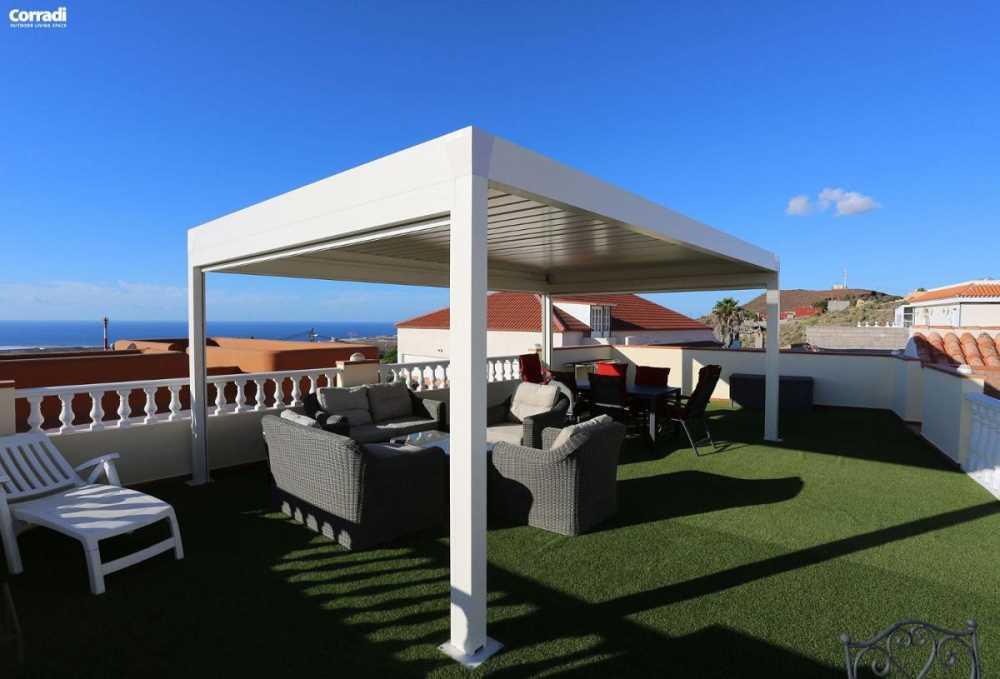Rooftop terraces: tips for a "high-altitude" outdoors

More and more people love to spend their time gardening, growing vegetables and, more generally, staying outdoors, even seeking out green spaces in the city. At the same time, the desire for community is growing, as confirmed by the many experiences of "life sharing" in various areas: from cars to homes, travel, urban gardens and apartment building spaces. This is the case of roof terraces, modern forms of hanging gardens where the passion for do-it-yourself greenery often combines with the desire to share spaces and services in apartment complexes.
Moreover, there are numerous benefits to having green roofs in the city. Following are some examples.
Rooftop terraces: a sustainable solution with breathtaking views
For those who live in the city without any land, the construction of a roof terrace is a sustainable solution that is beneficial and has a low environmental impact while offering a high level of aesthetic appeal. In fact, besides giving you the chance to enjoy an outdoor space with a magnificent view from above, green roofs on apartment buildings offer the chance to:
- Grow vegetables for your own use
- Increase the greenery in the city
- Create a natural barrier against noise pollution
- Help eliminate smog and fine dust from the air of urban areas
- Save energy by lowering heating and cooling consumption
- Capture rainwater, reducing the runoff flowing into sewerage systems
- Decrease the "heat island effect", i.e. urban overheating due to overbuilding and the use of machinery (from cars to household appliances) that generate heat
- Preserve biodiversity, offering shelter for birds and small animals, even in the city
- Increase people's well-being through outdoor life and gardening.
For all these reasons, today the installation of a greentop to insulate buildings is one of the most widespread elements of sustainable construction throughout the world, from Europe to the skyscrapers of Manhattan.
Design and energy savings
Canada, Denmark and France represent some of the best examples of nations that have focused on rooftop terraces as a way to make their cities more sustainable. In these countries green roofs are required by law on all new buildings as an alternative to solar panels.
After having verified feasibility in terms of permits and structural resistance, those interested in creating a roof terrace only have to decide which type of green roof to build. In fact you can start just by adding a grassy surface if you already have a rooftop terrace, to be completed with external covers that are most suitable for this type of modern green skyline.
Alternatively, green roofs can be transformed into actual gardens, areas for relaxing with swimming pools or open-air greenhouses providing a unique experience in contact with nature.
How can you create a rooftop terrace? Here are some tips
First of all, in order to create a garden on the roof you need to transform the building's roof from accessible to usable, working with an engineer and ensuring a good load capacity. These are not trivial changes, so to plan the project starting from the flooring, it might be useful to also contact an expert in garden design to choose the most suitable plants.
Depending on the load capacity and the thickness of the soil, on roofs you can grow everything from ornamental plants to vegetables: aromatic herbs, flowers, vegetables, spices, grasses and bamboo, highly resilient and therefore able to withstand sun and wind. For a high-altitude vegetable garden, raised planters offer an excellent solution that is both practical and fast. Whether you opt for flowers or vegetables to share with the other tenants, a rooftop garden will add new well-being to your days, helping to create a pleasant neighbourhood climate.
If you don't have a green thumb, you might consider using your green roof to create a pool or lounge area dedicated to relaxation (for you and your friends). In any case, remember that wind, sun and rain can be quite intense on higher floors. For this reason, if you want to build a roof terrace we advise you to assess building an actual room, creating verandas that you can spend time in any time of the day, for practical outdoor spaces that are modern and, above all, well protected.
Still unsure? If you want some more information on the subject we recommend reading the many books on green roofs that designers and architects have published in recent years. A good place to start is Living Roofs by the landscape architect Ashley Penn.
Now that you have some more ideas for your rooftop terrace all you need to do is dream big, just like always with Corradi.
